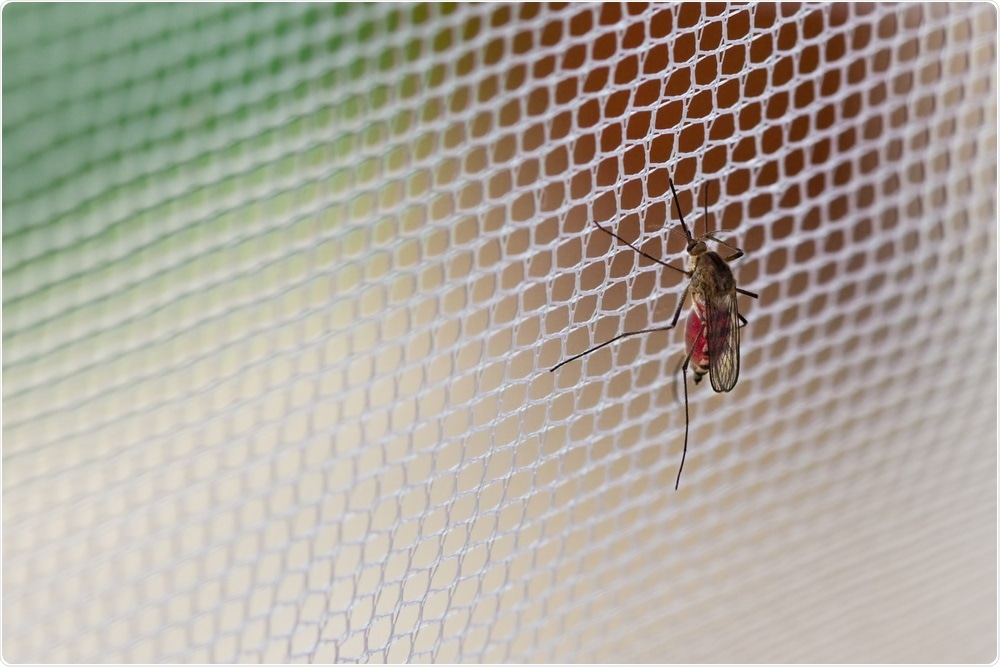New research suggests that lining clothes with graphene could prevent the spread of malaria, as mosquitoes are not able to pick up on chemical signals from the body that encourage them to bite. Graphene also acted as a physical barrier in experiments with the material, being too strong for mosquitoes to bite through.
 Birute Vijeikiene | Shutterstock
Birute Vijeikiene | Shutterstock
Researchers at Brown University published the paper, “Mosquito Bite Prevention Through Graphene Barrier Layers”, in Proceedings of the National Academy of Sciences, in which they “explore a nonchemical method for mosquito bite prevention based on graphene, the atomically thin sheet of carbon atoms, as a potential barrier material.”
Graphene, a nanomaterial that has been the subject of many theories and studies since the 1900s, is a type of carbon that is made up of a single layer of atoms in a two-dimensional hexagonal lattice.
Despite being lightweight in nature, graphene is 100 times stronger than steel, is almost transparent, and is highly conductive, and its first patent was only accepted in 2006.
The study explains that graphene-based materials are being made for sensing, temperature regulation, chemical, mechanical and radiative protection, and energy storage, but the possibility that graphene material may protect against mosquito bites has not been explored until now.
“Mosquitoes are important vectors for disease all over the world, and there’s a lot of interest in non-chemical mosquito bite protection,” senior author of the study Professor Robert Hurt of Brown University said.
“We had been working on fabrics that incorporate graphene as a barrier against toxic chemicals, and we started thinking about what else the approach might be good for,” he continued. “We thought maybe graphene could provide mosquito bite protection as well.”
Graphene acts as a chemical and physical barrier
The researchers conducted experiments in which some participants had their arms covered in graphene oxide films and cheesecloth, and others in only cheesecloth. The participants then put their arms into mosquito enclosures to see whether they would get bitten.
They found that participants covered in both cheesecloth and graphene oxide were not bitten at all.
“With graphene, the mosquitoes weren’t even landing on the skin patch – they just didn’t seem to care,” Cintia Castilho, a PhD student at Brown University and the study’s lead author, explained.
“We had assumed that graphene would be a physical barrier to biting, through puncture resistance, but when we saw these experiments we started to think that it was also a chemical barrier that prevents mosquitoes from sensing that someone is there."
To confirm that it was graphene that was deterring the mosquitoes, human sweat was put on the outside of the graphene material, which did attract the insects to try and feed.
This confirmed that graphene was not triggering the mosquitoes’ instinct to bite through blocking chemical signals produced in sweat on the body, which alerts mosquitoes that a potential food source is nearby.
The technology needs refinement before it can be sold as a garment
However, one significant weakness in graphene oxide is that it loses its efficacy when it becomes wet, meaning garments laced with the material wouldn’t be able to be worn in the rain.
Unfortunately, it is in damp and humid conditions in which mosquitoes like to live. The researchers turned to a type of graphene with reduced oxygen content (rGO) but found that while it was effective in both wet and dry conditions, it wasn’t breathable.
GO is breathable, meaning you can sweat through it, while rGO isn’t. So our preferred embodiment of this technology would be to find a way to stabilize GO mechanically so that it remains strong when wet. This next step would give us the full benefits of breathability and bite protection.”
Professor Robert Hurt, Senior Author
Journal reference:
Castilho, C. J., et al. (2019). Mosquito bite prevention through graphene barrier layers. PNAS. https://www.pnas.org/content/early/2019/08/20/1906612116